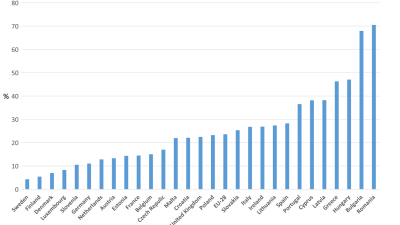The next generation of Americans faces a lower level of inter-generational earnings mobility than their immediate predecessors, according to a paper from the Institute for the Study of Labor in Bonn. At the same time those on the very highest incomes will be better placed to ensure their privileges are passed on to their children.
Key points
- The cohort of American children raised since the 1980s, who will reach their prime working years in the coming decade, is likely to experience an average degree of inter-generational income mobility as low as – if not lower than – previous cohorts who were raised in an era of less inequality.
- The inequality literature has paid little attention to the inter-generational consequences of increasing top income shares. Those in the USA on the top 1 per cent of incomes are 'divorced' from the rest of the population in their work arrangements, consumption behaviour and beliefs. They are also different in the way advantages are passed on to the next generation – through higher-quality schooling, other investments in human capital from the early years onward, and also nepotism in the allocation of jobs.
- The top fifth of the US income distribution has also experienced significant growth in its relative standing in recent years, which partly reflects the increasing benefits of higher education. This group has both the resources and incentives to turn more intensely to promoting the capacities of their children, in the belief they may be enabled to rise into the top 1 per cent. As a result they are probably not predisposed to support the recasting of public policy needed to promote the upward mobility of those at the bottom.
Source: Miles Corak, Income Inequality, Equality of Opportunity, and Intergenerational Mobility, Discussion Paper 7520, Institute for the Study of Labor (Bonn)
Link: Paper



 PSE:UK is a major collaboration between the University of Bristol, Heriot-Watt University, The Open University, Queen's University Belfast, University of Glasgow and the University of York working with the National Centre for Social Research and the Northern Ireland Statistics and Research Agency. ESRC Grant RES-060-25-0052.
PSE:UK is a major collaboration between the University of Bristol, Heriot-Watt University, The Open University, Queen's University Belfast, University of Glasgow and the University of York working with the National Centre for Social Research and the Northern Ireland Statistics and Research Agency. ESRC Grant RES-060-25-0052.






